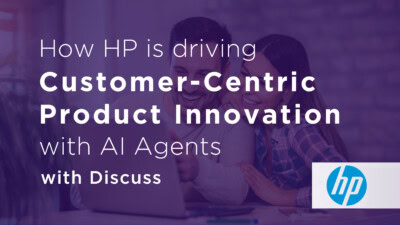How to Optimize Engagement with a Virtual Focus Group: Strategies and Tips

Creating successful engagement in virtual focus groups starts with proper planning. This involves everything from the setup of your digital platform to selecting diverse participants who will feel comfortable sharing their thoughts and ideas. However, it’s not just about setting the stage but also ensuring ongoing involvement across all phases of discussion.
A little-known trick that may surprise you is leveraging the unique characteristics of virtual settings, like using interactive features such as live polls or breakout rooms, which can elevate the participants’ experience and inspire more active dialogue. Thus, preparation is key to taking your first step into an engaging group discourse online.
Virtual Focus Group Engagement
In order to facilitate effective virtual focus group sessions, it’s important to utilize user-friendly video conferencing tools that prioritize participant engagement and accessibility. By leveraging platforms designed specifically for qualitative research, such as Discuss, you can ensure a seamless experience tailored to the unique needs of your research project.
Moreover, allowing participants to join the virtual focus group on their mobile devices increases accessibility. Not everyone may have access to a laptop or desktop computer, and by enabling mobile participation, you ensure inclusivity and accommodate a diverse range of participants, enriching the discussion with varied perspectives.
Genuine communication during the recruiting process also plays a crucial role in promoting active engagement. Participants are more likely to contribute meaningfully when they perceive transparency and trust in the recruitment process. This can be achieved by openly communicating the purpose of the focus group, setting clear expectations, and fostering a sense of partnership with the participants.
Creating a positive tone and supporting engagement during the virtual focus group is vital not just for maintaining participant interest but also for driving insightful conversations.
Preparing for a Virtual Focus Group
Organizing a virtual focus group is like orchestrating an informative and engaging symphony. To ensure your session hits all the right notes, there are several key elements to consider, from defining your objectives to creating a comfortable environment. Let’s explore these crucial aspects one by one.
Establish Clear Objectives
Before bringing participants together, it’s essential to define the purpose of the virtual focus group. Clearly outlining your goals and objectives helps direct discussions and ensures that the feedback gathered aligns with your research needs. Whether you seek insights on consumer preferences, product usability, or brand perception, having specific objectives will guide the flow of conversation and ultimately lead to valuable data for analysis.
For instance, if you’re launching a new line of beauty products, your objective might be to gather feedback on the packaging design, product functionality, and consumer perceptions. By establishing these clear goals in advance, you can tailor questions and activities during the focus group specifically to yield insights relevant to your intended outcomes.
Selecting Suitable Participants
Next up is the critical task of selecting participants who will actively contribute valuable perspectives during the discussion. These individuals should represent your target audience in terms of demographics, behaviors, and preferences related to your research focus. Diverse representation within the group can offer varying viewpoints and ensure that your findings are comprehensive and reflective of different consumer segments.
When choosing participants for a virtual focus group centered on technology usage among seniors, diversity could mean involving individuals with varying levels of technical familiarity or cultural backgrounds. This breadth of representation can provide nuanced insights into potential barriers or preferences within this demographic.
Technical Setup
Creating a seamless experience starts with ensuring that all technical aspects are fully operational ahead of the virtual gathering. Testing your chosen video conferencing platform, microphone settings, and camera angles can prevent disruptive interruptions during the session. Moreover, providing clear instructions to participants on how to join the meeting and troubleshoot common technical issues establishes a sense of preparedness and minimizes potential hiccups.
Furthermore, having a backup plan in place—a secondary platform or communication channel—can serve as a safety net in case unexpected technical difficulties arise during the session. This planning ensures that the focus remains on productive discussions rather than troubleshooting disruptions.
Create a Welcoming Environment
The digital space where your virtual focus group takes place should be free from distractions and comfortable for all participants. When designing this environment, consider factors such as lighting, background visuals, and audio quality to ensure a professional and conducive atmosphere for open communication.
In addition to these physical considerations, it’s equally important to establish ground rules that promote respectful interactions among participants. Encouraging active listening and setting expectations for constructive engagement fosters an environment where every voice is valued. This welcoming and respectful setting encourages participants to freely express their thoughts and opinions without inhibition.
Strategies to Engage Participants Virtually
Engaging participants in a virtual setting has unique challenges, but with the right strategies, it can be as effective as an in-person focus group. Let’s explore some key techniques to ensure active and meaningful participation.
Icebreaker Activities
Building rapport among participants is crucial, especially in a virtual environment where initial interaction can feel more formal and rigid. Incorporating icebreaker activities at the beginning of the session can help break the ice, introduce participants to each other, and create a relaxed and welcoming atmosphere. For example, you could use fun and light-hearted questions that encourage everyone to share something about themselves or their experiences.
Visual Stimuli
Incorporating visual aids such as slides, infographics, or video clips can enhance presentations, illustrate concepts, and maintain participants’ attention. Utilizing visual stimuli breaks up the monotony of constant talking and engages different learning styles. Consider using compelling images, charts, or short video clips that are directly relevant to the topic at hand.
Real-time Feedback Mechanisms
To encourage immediate engagement and gather instant feedback from participants, take advantage of real-time features within the video conferencing platform. These tools can include live polling, chat functions, or reaction emojis that allow participants to express their opinions without interrupting the flow of the conversation.
Incentivize Participation
Incentivizing active participation offers a practical way to motivate and acknowledge the valuable input of the participants. Consider offering rewards such as gift cards, discounts on products or services, or entry into a prize draw for those who actively contribute to the discussion.
Utilizing these strategies fosters a collaborative and engaging virtual focus group environment where participants feel comfortable sharing their thoughts, ideas, and experiences. Successful engagement is rooted in creating an atmosphere where everyone feels valued and supported in contributing meaningfully to the conversation.
Encouraging Interactive Sessions
When it comes to virtual focus groups, interactivity is imperative. Participants should feel compelled to actively engage in the discussions, fostering a sense of involvement and value for each individual. How do you encourage this kind of interactivity in virtual focus groups? Let’s explore some effective methods.
Facilitate Open Discussions
Creating an environment conducive to open dialogue is one way to encourage interactivity. It’s essential that participants feel comfortable expressing their views without fear of judgment or interruption. Providing equal opportunities for input and actively listening to their contributions fosters a space where everyone feels valued—a crucial element for promoting genuine engagement.
Breakout Room Activities
Utilizing breakout room activities is another powerful tool for nurturing interaction. These activities allow participants to engage in smaller group discussions, promoting deeper involvement and fostering more intimate conversations. By breaking into smaller groups, participants have the opportunity to share their perspectives more freely, leading to richer discussions and enabling quieter participants to have their voices heard.
Q&A and Feedback Sessions
Incorporating structured Q&A and feedback segments is another effective approach. This allows for addressing participant inquiries and also validates their input. When participants see that their questions and feedback are being acknowledged and responded to, they feel a deeper sense of involvement and value in the discussion. This reinforces the idea that their opinions are essential to the success of the focus group.
The goal here isn’t only about making participants feel involved—it’s about actually involving them. Every participant should feel integral to the success of the discussion, enriching the quality of insights gathered and creating a positive, empowering experience for all involved. In essence, it’s not just about talking to your participants but engaging in meaningful dialogue, embracing diversity of thought, and fostering an environment that truly values every voice.
Crafting Engaging Questions for Discussion
When it comes to virtual focus groups, the core of a successful discussion hinges on the questions you ask. Crafted with care, these questions are the gateway to valuable insights, prompting participants to share their candid thoughts and ideas.
The best way to ensure an engaging virtual focus group is to begin with reflective questions. These types of questions encourage participants to tap into their personal experiences and share them with the rest of the group. For example, asking, “Can you tell us about a recent experience where you encountered a challenge related to our topic?” invites participants to draw from real-life situations, creating a more dynamic and personal exchange.
Next, incorporating hypothetical questions can provide an opportunity for participants to explore potential scenarios or outcomes. These “what if” questions help in uncovering different perspectives and unforeseen opportunities or challenges. An example of this type of question could be: “If you were in charge, what changes would you make to improve the current situation?”
Finally, consider weaving in probing questions that delve deeper into specific topics or statements made by participants. These questions aim to elicit more detailed responses and encourage critical thinking. By asking “Why do you feel that way?” or “Can you provide an example to illustrate your point?” moderators can prompt participants to elaborate on their initial responses, leading to a richer and more comprehensive understanding of their perspectives.
For instance, let’s say the virtual focus group is discussing consumer preferences for a new product. A reflective question might be: “Can you share a recent experience where a product exceeded your expectations?” A hypothetical question could follow: “If this product was customizable, what features would you prioritize?” And finally, a probing question might dig deeper with: “Can you explain how having those features would impact your decision to purchase?”
By tailoring questions to evoke personal experiences, hypothetically exploring possibilities, and diving deep into specific aspects of the discussion, we can ensure that our virtual focus group discussions are both stimulating and productive.
Evaluating and Enhancing Discussion Engagement
The success of a virtual focus group doesn’t solely rest on having compelling questions; it’s equally dependent on the engagement levels of every participant. Folks can easily get distracted or disengaged in a virtual setting, hindering the quality and depth of feedback you can collect. Therefore, post-session evaluation is crucial to understanding how well your strategies are working and how you can continually enhance them.
After each focus group, gathering feedback from participants is a good way to assess their experience, understand their level of engagement, and gather insights into what worked well and what needs improvement.
You might discover that some participants found certain activities particularly engaging while others felt disconnected during a specific part of the discussion, providing valuable insight into each engagement strategy’s impact on your participants and where adjustments or enhancements may need to be made.
Continuous improvement is key here. Using the insights gained from these evaluations, you can refine and enhance your engagement strategies, adapt to participants’ preferences, and ultimately optimize the overall virtual focus group experience for increased engagement and invaluable feedback.
Reach Out to Discuss For Your Own Virtual Focus Group
Optimizing engagement in a virtual focus group entails creating an environment where participants feel compelled to actively participate and freely share their thoughts. To achieve this, various strategies can enhance interaction, encourage openness, and ensure a smooth flow of communication throughout the session.
It’s essential to leverage reliable virtual research platforms like Discuss, ensure genuine communication during the recruiting process, send reminders for the session, reinforce the need for private spaces, budget time for technical difficulties, set a positive tone and support engagement, and personalize the experience.
By implementing these practices successfully, you’ll be able to create an environment where each participant feels heard and valued, resulting in richer and more organic feedback. These real-world accounts can serve as powerful examples of how these engagement techniques have been effectively implemented in virtual focus group settings, showcasing their impact on meaningful participation and insightful feedback across various industries.
Get closer to your customers with live virtual conversations on our qualitative research platform, tailor made for interactive virtual focus groups and live interviews. Save time with quick research set-up, connect with respondents across the globe, compile and deliver insights in record time with our AI-powered insights tools, and scale your research with seamless collaboration among your teams.
Visit our website today to implement these successful strategies and elevate your virtual focus groups!
Ready to unlock human-centric market insights?
Related Articles

How to Facilitate Meaningful Insights: Strategies for Effective Focus Group Discussions
Conducting a worthwhile focus group requires a strong purpose and well-defined objectives. This isn’t an ordinary chat; it’s an organized…
Conducting a worthwhile focus group requires a strong purpose and well-defined objectives. This isn’t an ordinary chat; it’s an organized…

Maximize the number of research projects completed by year’s end: Yes, it can be done
Ask most agencies managing enterprise-level market research (MRX) projects, and they’ll tell you they have a love/hate relationship with their…
Ask most agencies managing enterprise-level market research (MRX) projects, and they’ll tell you they have a love/hate relationship with their…

Seven Tips and Tricks for Better Online Focus Groups
The pandemic accelerated adoption of digital experiences at an unprecedented rate. It seemed like the switch was flipped almost overnight…
The pandemic accelerated adoption of digital experiences at an unprecedented rate. It seemed like the switch was flipped almost overnight…



